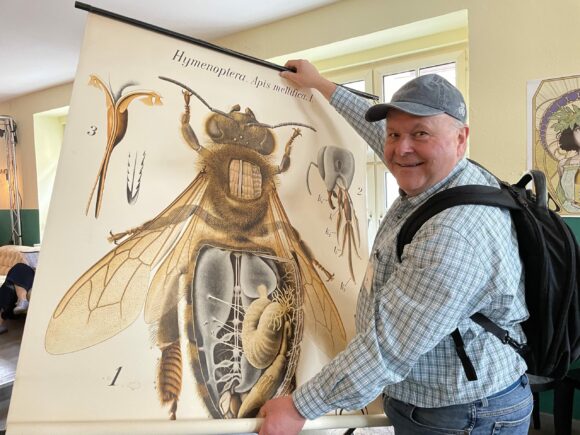Researchers at Hof University of Applied Sciences want to reduce the use of labor and materials in the management of closed aquaculture facilities, among other things. This is to be achieved with the help of biodegradable, so-called “growth bodies” for water purification. These could soon replace conventional purification elements made of petroleum-based plastics and thus increase environmental compatibility. The research project for this has been running since April 2021.

Aquaculture is one of the fastest growing food sectors with an annual production worth 250 billion US dollars. Growing bodies are indispensable: Due to their large surface on which bacteria settle, they help to convert toxic metabolic products into a less harmful form. This saves water and protects the environment. However, aufwuchskörper are usually made of petroleum-based plastics, such as PE and PP.
Recycling them is costly, and plastic in the world’s oceans and waters poses a major challenge to humanity – plastic can eventually give rise to microplastics, which we ingest ourselves through our food and which, in any case, have a harmful effect on the environment and its organisms.”
Dr. Harvey Harbach, Aquaponics Research Area Leader
The project, which will run until 2023, is funded by the German Federal Ministry for Economic Affairs and Energy as part of the Central Innovation Program for SMEs (ZIM).
Bioplastics instead of plastics
In general, therefore, the aim is to find substances that can replace conventional plastics. In the case of the growth bodies, the use of bioplastics offers itself as a material. In close cooperation with the two institutes for applied biopolymer research (ibp) and for water and energy management (iwe) at Hof University of Applied Sciences, a team of researchers is looking into this issue in greater detail. In collaboration with a commercial enterprise from Franconia, completely biodegradable growth bodies for biological water treatment have been developed since the beginning of April 2021 under the project name “BioBioCarrier”.

Testing different materials
“The difficulties in the project lie in the correct selection of biopolymers and the associated degradability in water. The new growth body must not degrade too quickly in freshwater,” explains project member Ms. Christin Baumgart (ibp). New properties are to be generated by combining different polymers with each other: This means that the biodegradability in water can be adjusted. The results so far look promising. Accordingly, progress has already been made and solutions identified. However, a number of hurdles still have to be overcome before the product is ready for the market. Project member Sebastian Kanne (iwe) explains
Because the application takes place in aquaponics, the substances must also be suitable for the fish and plants. The substances used must be harmless, biodegradable and should ideally be bio-based. “
Sebastian Kanne, project team member
New development beckons
A decisive challenge in the project, but one that could represent a breakthrough within the industry concerned, could ultimately be provided by a new development currently being worked on in Hof: “In aquaponic systems, nutrients have to be added manually at regular intervals, without which plants cannot grow or can only grow poorly. This requires preceding measurements, thus laboratory technology, thus working time, and is ultimately extremely cost-intensive
Our idea is to combine the biodegradation of the product with the release of the substances needed by the plants. This would consequently reduce labor time and necessary lab equipment and decisively improve profitability.”
Dr. Harvey Harbach
He added: “Currently, there are no comparable products on the market. This would be a real innovation, which would offer the partner company an excellent market position, bring money into the region and expand jobs. We are working at full speed and expect a breakthrough soon that this product will be indispensable between fish and plants.”







